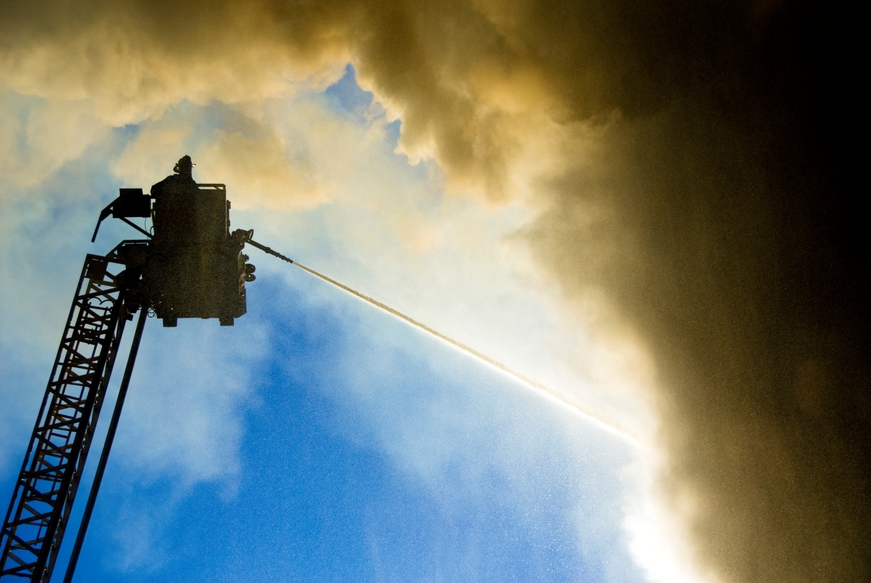The History of Tire Fires and How to Prevent Them
A wall of dense black smoke creeps into the sky. A horrible stench fills the air. Intense heat drives back firefighters, while thick soot clings to their clothes. Suddenly, a pocket of methane gas explodes upwards, creating a blowtorch that shoots flames 30 feet in the air.
What’s the cause of this horrific scene? This is a description of a tire fire, which can occur when tires pile up in landfills. While natural disasters like earthquakes and hurricanes can’t be prevented, tire fires are one disaster that we can stop. Knowing and remembering the history of tire fires will help make us more determined to prevent them in the future.
Mount Firestone
Everett, WA, 1984
In September of 1984, a pile of tires, which had been stored for recycling, caught fire. The city was holding on to these tires in the hopes of selling them for fuel. The problem with this plan was that the tires were such good fuel. Over 4 million tires ignited, and the resulting fire burned for seven months.
Firefighters pumped 2,000 gallons of water per hour on the fire for two days to no avail. Eventually, the city realized that they just had to let the fire burn itself out. For more than half a year, citizens of Everett dealt with polluted air and soot that covered every surface. Many experienced health problems due to the smoke. The fire came to be known locally as “Mount Firestone.” While the city had initially hoped to make a profit by recycling tires, they ended up having to pay $97,000 to have the remains hauled away. (source: HistoryLink)
Tire Inferno
Hagersville, Ontario, 1990
February of 1990 saw what was, at the time, the largest tire fire ever to occur in North America. It happened in the Canadian town of Hagersville, 80 miles west of Buffalo, New York. The New York Times called it the “Worst Tire Inferno.” They also pointed out that the fire was a symbol of the problems with scrap tire regulation in the U.S. and Canada. At that time, there were very few states which regulated the disposal of tires.
The fire burned for just 17 days, but consumed nearly 14 million tires, which were spread across 11 acres of land. Three years prior, the owner of the tire dump had been ordered by the Canadian Ministry of Environment to build fire lanes and install water lines in case of fire, but the work was never done. It cost the city around $1.5 million to put out the fire. (source: NYT)
Fire in the World’s Biggest Tire Graveyard
Kuwait City, Kuwait, 2012
By the end of the 20th century, most countries had instituted regulations for recycling tires that prevented dumping in landfills. Unfortunately, Kuwait was not one of those countries. And even worse, some “savvy” businessmen began importing tires from other countries and disposing of them – for a hefty fee, of course. They piled the tires in a landfill that became known as the world’s biggest tire graveyard. All those tires were a fire waiting to happen, and in April of 2012, they began to burn.
The black plume of smoke from the Kuwait fire was so big that it could be seen from space. More than 5 million tires were in the dump at that time, and the oil they released as they burned caused an ecological disaster. The saddest part of this story is that after the fire, the landfill owners made no effort to dismantle the remaining tire piles. By 2015, the dump had grown to hold more than 7 million tires! (source: Amusing Planet, Daily Mail)
Recent History of Tire Fires
Sesena, Spain, 2016
Despite decades of devastating tire fires, regulations on recycling tires have not yet put an end to this disaster. In May of 2016, one of Europe’s largest tire dumps caught fire. Schools canceled classes, residents were evacuated, and highways closed to prevent injury from the fire and smoke. The dump had closed in 2003, when the government declared it illegal. Yet, as late as 2016 authorities had not properly disposed of the tires. Like most tire fires, this one was probably started by an arsonist. (source: US News)
What We Can Learn About Recycling Tires
There are a few common threads throughout these, and other, tire fires. The tires were whole, not shredded. Whole tires can trap methane, which helps ignite and spread fires. The burned tires create a widespread ecological disaster. And all the fires could have easily been prevented by properly recycling tires instead of stacking them in a dump.
What is the right way to recycle scrap tires? In almost every part of the world, laws for recycling tires are clear. Shredded tires are much safer than whole, since they can be buried or stored without trapping methane gas or leaching toxins.
An even better solution to just shredding tires and throwing them away is to recycle them. Shredded tires may not be likely to cause fires like whole tires do, but they are still contributing to landfill waste, especially since most synthetic rubbers are not biodegradable.
Old shredded tires can find new life as playground surfaces, athletics tracks, and roads. Instead of throwing out whole tires, we can also repurpose them. Some creative recyclers have made planters, swings, sandboxes, and more out of whole scrap tires. Whatever method you choose, recycling tires is a far safer alternative to throwing them away, not to mention better for the environment as a whole. By shredding and recycling tires, we can prevent future tire fires and help make the earth a little greener.
EcoGreen was founded to help improve the process of recycling tires. Learn about our tire shredders, and find the equipment that meets your tire recycling needs, by contacting our experts today.
